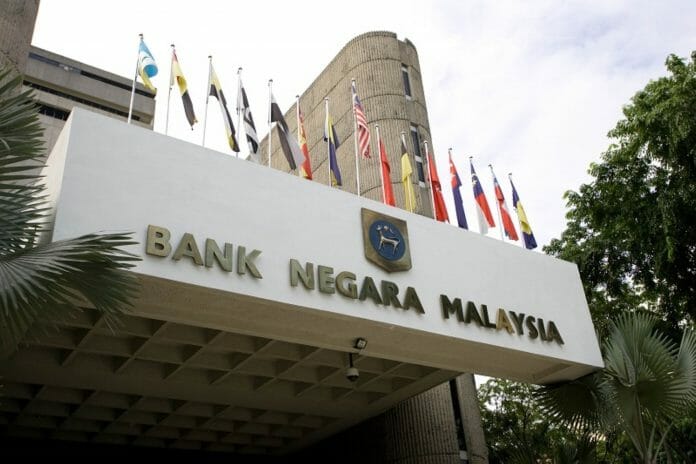By Wellian Wiranto, Economist at OCBC Bank
We had thought that, even though Malaysia’s economy has started to recover well from the pandemic depths, the outlook remains so riddled with uncertainties that Bank Negara (BNM) would, on balance, opt to cut its overnight policy rate (OPR) further today as a hedge.
As it turns out, even though its statement suggests a certain wariness to the recovery ahead, pointing out the uneven nature of the uptick and how downside risks linger, there is nonetheless enough signs of recovery momentum thus far for BNM to comfort itself that it has done enough so far.
Given the telling tilt towards a holding pattern, it appears that BNM will not be in a big hurry to ease rate further in the near term, unless the outlook turns unexpectedly gloomier. If everything goes swimmingly as it appears to expect in the coming months, it would hold its rate unchanged again at 1.75%, in the next and last MPC for the year in November.
In explaining its monetary policy decision, Bank Negara has typically stuck steadfast to a one-pager MPC statement, which is already relatively short. If, for some reason, it has to adopt a more Spartan approach with a lot fewer words, however, the saying of “If it ain’t broken, why fix it” might come in hand as a summary of the members’ reasoning behind today’s decision to keep its OPR unchanged.
Even though the Q2 GDP data was achingly concerning at a contraction of 17.1% yoy when it was released on August 14th, even back then Bank Negara had sounded relatively sanguine about the recovery, as we noted here. The economic recovery momentum that was taking hold back then appears to have continued robustly enough since, for BNM to remain comforted that it does not require further mollycoddling in the form of more rate cuts in the near term.
First of all, on the global front, the MPC statement points out that the “easing of containment measures across more economies”, together with policy support, have egged the recovery on. Even as services uptick has been slower, the “re-opening of production facilities has led to a resumption of manufacturing and trade activity.”
This is echoed onshore, with the MPC members highlighting how “Latest high frequency indicators show that labour market conditions, household spending and trade activity have continued to improve.” Casting their gaze further out, the statement notes that “improvement is expected to continue into 2021, supported by the recovery in external demand and expansion in private sector expenditure.”
Such a view stands comforting on its own, but would sound decidedly chirpy if set against the previous MPC statement when it cut rate on July 7th. As we pointed out back then, pandemic resurgence and potential for another round of economically damaging lockdowns globally were beckoning at that time.
Still, today’s statement is not without its acknowledgement of downside risks.
In fact, the big caveats of how downside risks and uncertainty still may prevail colour its outlook for both global and domestic economies. Moreover, the recovery on both fronts continue to have a ‘fly in the ointment’ element to it.
On the global front, the statement notes that although financial conditions have improved, “risk aversion remains elevated” perhaps in allusion to the renewed US market volatility. On the home front, it notes how “the pace of recovery will be uneven across sectors, with economic activity in some industries remaining below pre-pandemic levels, and a slower improvement in the labour market.”
All in all, the statement suggests that the door remains open for easing in the future if necessary, but for now the easing that it has undertaken so far – with its cumulative 125bps cut – is sufficient to help growth.
We had thought on balance that it would cut this time round, partly because of the expiration of the loans moratorium by the end of September. The statement did not provide any hint of specific concern on that front, putting its focus, rather, on how economic activity including labour market and household spending continue to recover.
It appears that BNM is comforted enough by how well the economy has healed from the pandemic damages, to take the view that households and businesses would not have any big issue servicing their loans once more come October.
Perhaps, like a good doctor, BNM sees no need in over-prescribing medicine if the patient is already recovering well enough on the existing mix. The checkups will continue routinely from here, however, and if there is any indication that the patient’s conditions have turned for the worse, either because of unfavourable internal changes or unhelpful external conditions, this doctor would not hesitate to prescribe something stronger, however.









